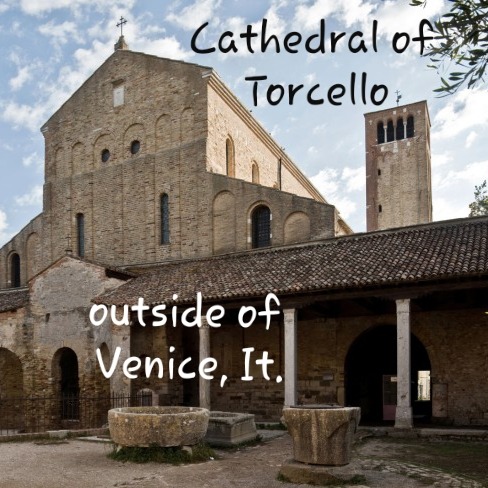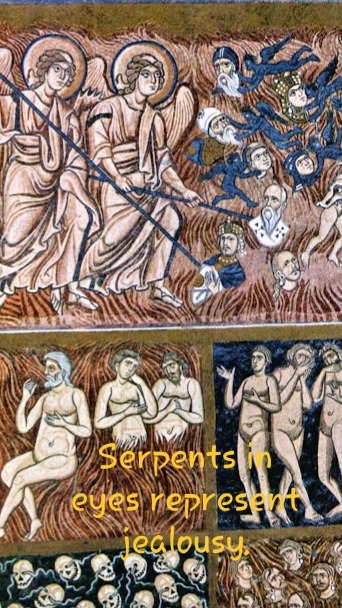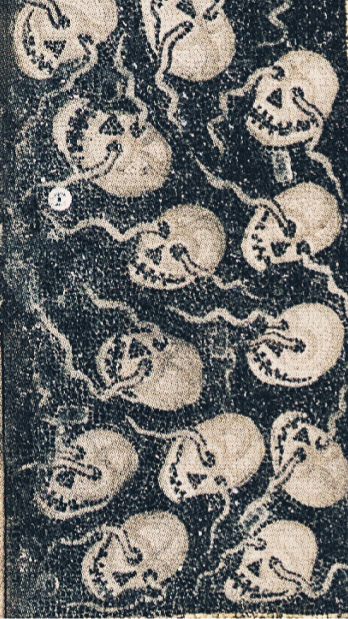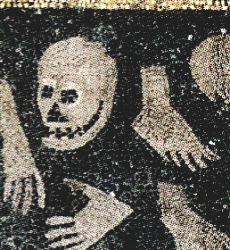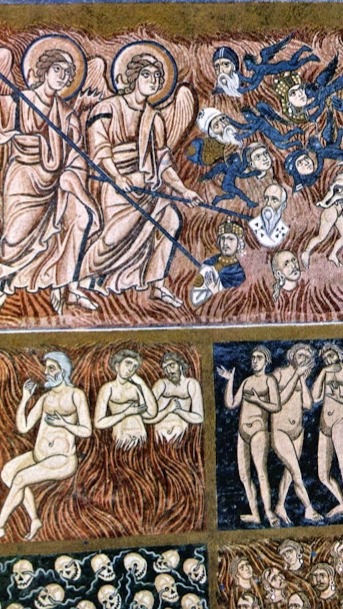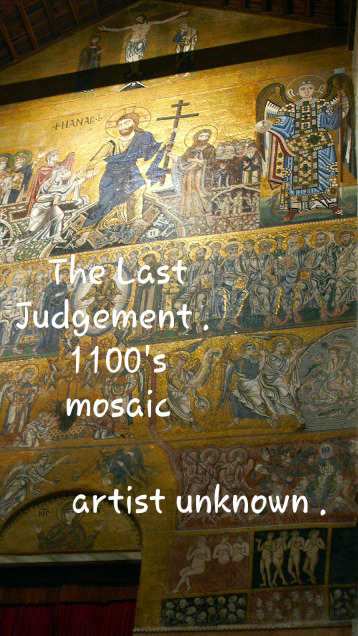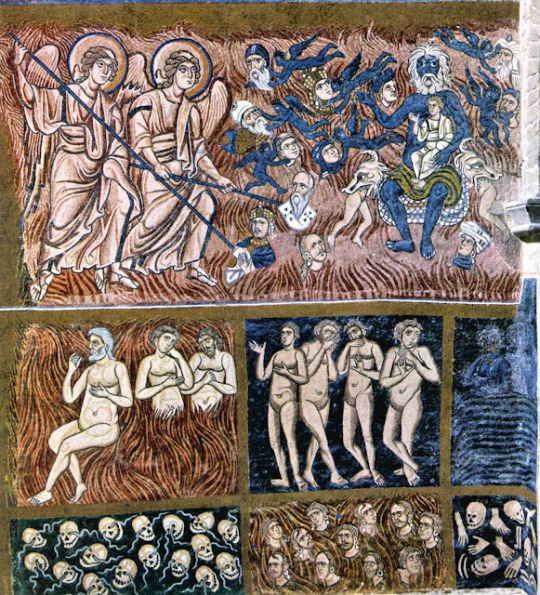#bonefool
Text

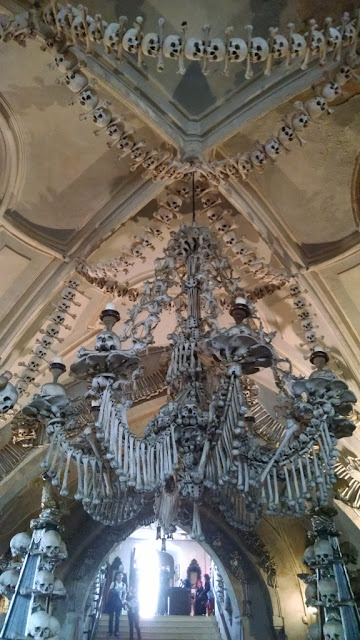
Frantisek Rint was a Bohemian carpenter. In 1867 he was brought in to rearrange the massive piles of Medieval bones that filled the Sedlec Ossuary. This building was a sanctified building within a large and popular Czech cemetery ( supposedly sprinkled with earth from Golgotha by an ancient abbot pilgrim).
The fame of the place caused great demand for burials, especially after the black plague and wars. The bones of the long dead began being exhumed and stored in the basement of the chapel (legend says one monk spent all his later years just exhuming and organizing the bones of 40-70k people) 400 years later local nobility hired the man Rint to redesign the bone piles, and his elaborate designs now attract 200,000 visitors annually. Over 3 years, his labor created 4 chandeliers, a massive coat of arms of his benefactors, the Schwarzenberger family, and his own bone signature.
81 notes
·
View notes
Text
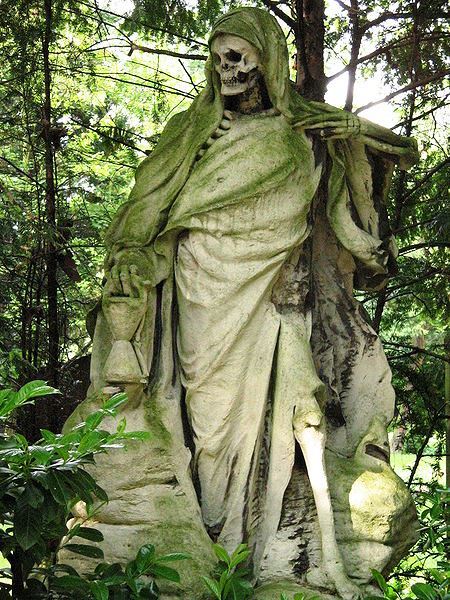
29 notes
·
View notes
Text
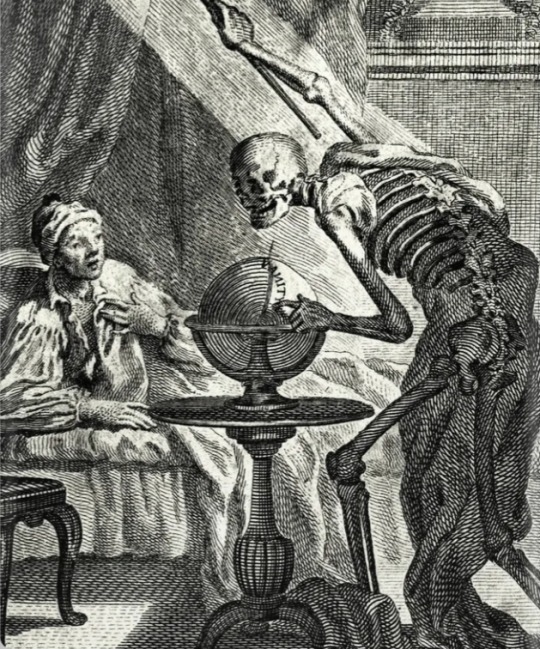
16 notes
·
View notes
Text

7 notes
·
View notes
Text
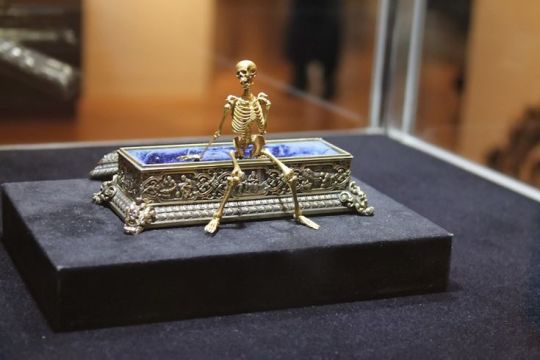
The solid gold skeleton, perched on the side of an ornate silver coffin, stands only 3.5cm high and is a unique example of Jewish gothic.
Complete in 1903 with 176 jointed parts (not just joined with wire), Israel Rouchomovsky's fascinatingly morbid skeleton is a piece reflecting the turbulent life of Jews in Eastern Europe, as well as the artists love of fine detail. The skeleton is solid hold, and the ornately carved coffin is solid silver.
The Jewish artist struggled in Odessa for official recognition. At one point he was contracted to create a golden crown in the manner of ancient Pythian funeral work. It was magnificent enough to be purchased by the Louvre, but historical inaccuracies raised red flags. The infamy he received became fame when he brought this skeleton and coffin to Paris. Eventually Russian pogroms and lucrative commissions in France convinced his whole family to emigrate. He declares this piece took almost a decade to complete.
15 notes
·
View notes
Text
Who was the Stone Cutter?
youtube
I'm hoping to ask around about this person, what a fantastic character!
13 notes
·
View notes
Text

The grave of a woman flogged for having a child out of wedlock, possibly the inspiration for the heroine of "The Scarlet Letter". A winged skull, and a winged hourglass. Both represent the fleeting span of life
9 notes
·
View notes
Text

the frontispiece page of an 1808 edition of "Tales of Terror. A Gothic horror story collection. When this book was first published, in the 1790s, was the peak of this genre. The gothic literary movement involved a mixture of romantic features connected to medieval stories, (hence the term Gothic) but combined them with contemporary mores and references. Wealth, Monstrous nobility, dead loves and family, secret societies, and of course, supernatural creatures were all popular features. Many of its most popular authors were women, most famously Mary Shelley's Frankenstein in 1818. European culture was rocked by violent revolutions, including the future USA, France, and Haiti, as well as the rise of urban industrialization and the scientific discoveries. Even as the most fortunate of the public were starting to experience some of our current confidence in the power of mankind, this dark and unreal literature fed the human hunger for romantic mystery and powerless suffering . It had cultural impacts in the English, French and German speaking worlds that influence many to this very day.
8 notes
·
View notes
Text
Optical Illusion Skull Art
G. Allan Gilbert drew the well known piece "all is vanity" in 1892 at 19. He was a famous American magazine illustrator. The title is a pun on traditional Ecclesiastes "vanity of vanities, all is vanity" biblical quote. Not only is the woman vilified for her desire to look pleasing, but she is actually sitting before a massive round mirror at a vanity table. The common style is to have to figures whose dark hair is the eye sockets. The nasal cavity shows the most individuality, and the teeth are always interesting!
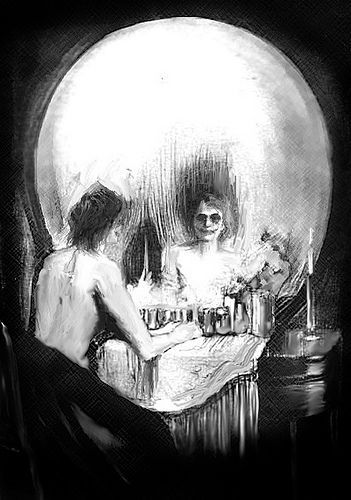
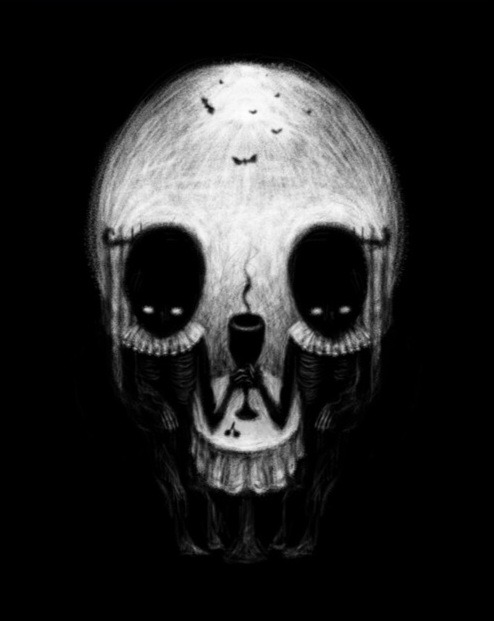
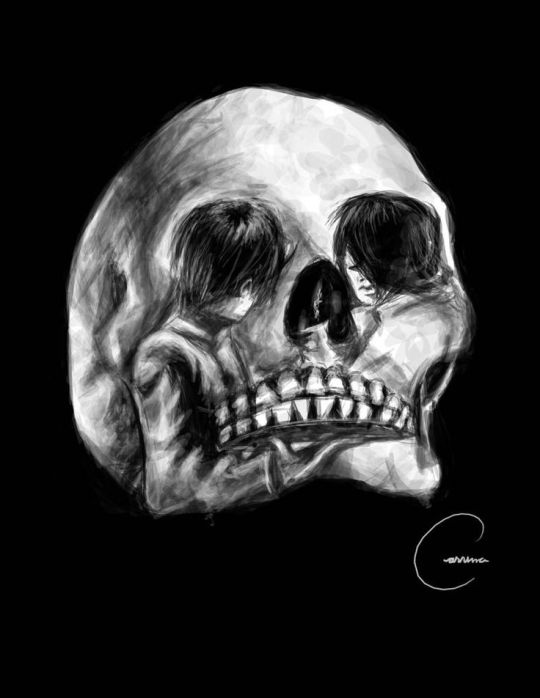
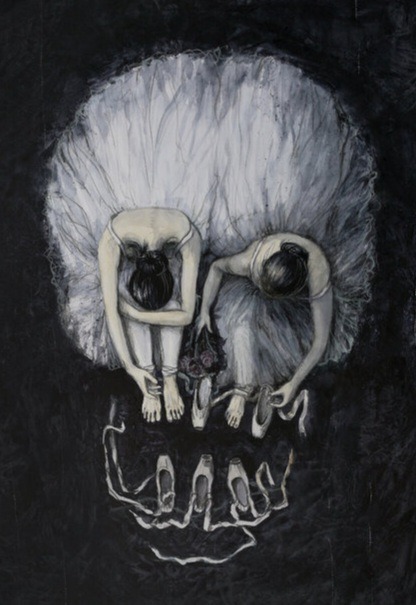
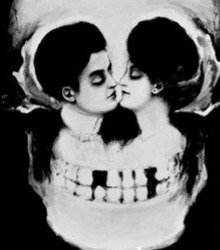
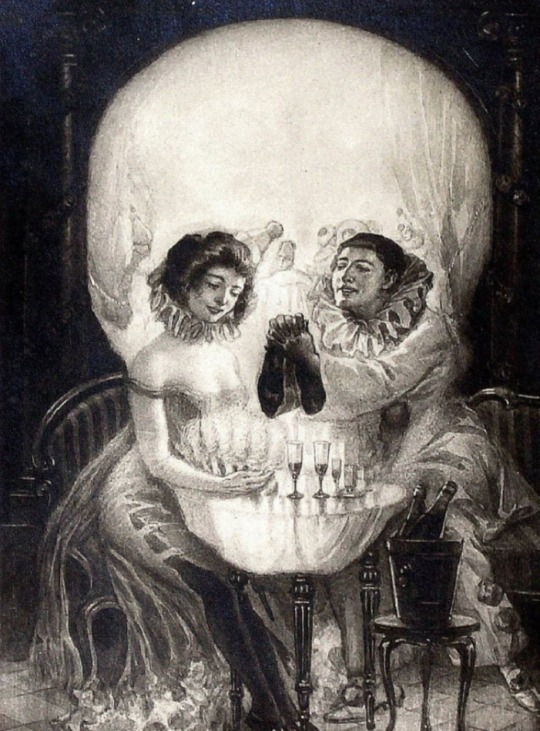
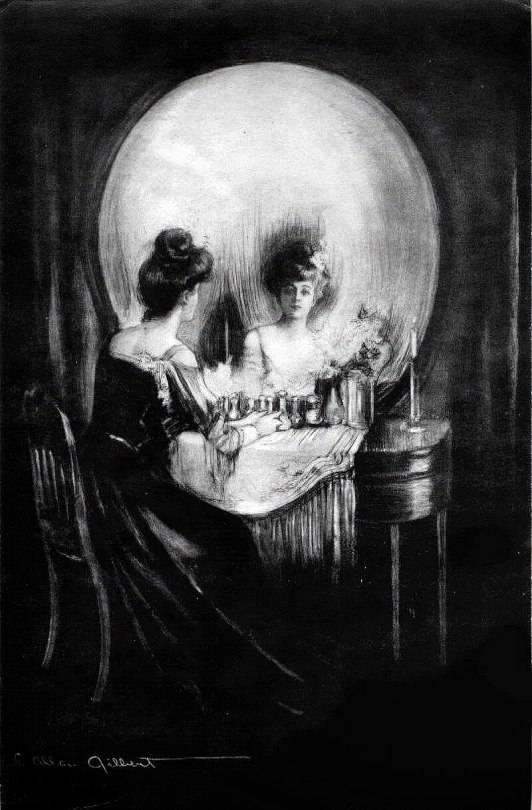
6 notes
·
View notes
Text
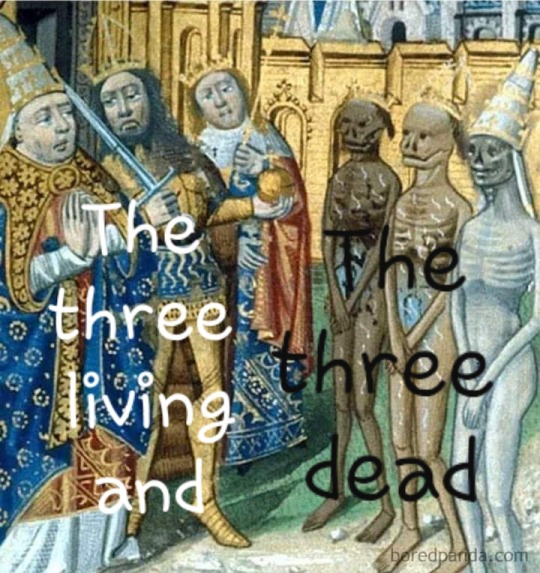


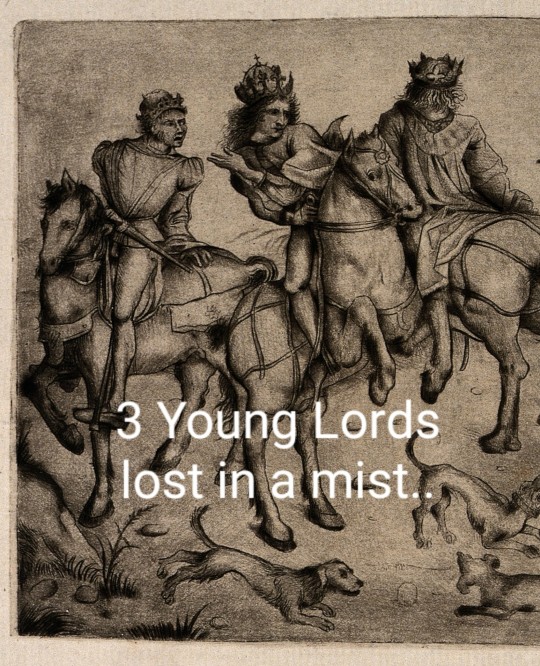
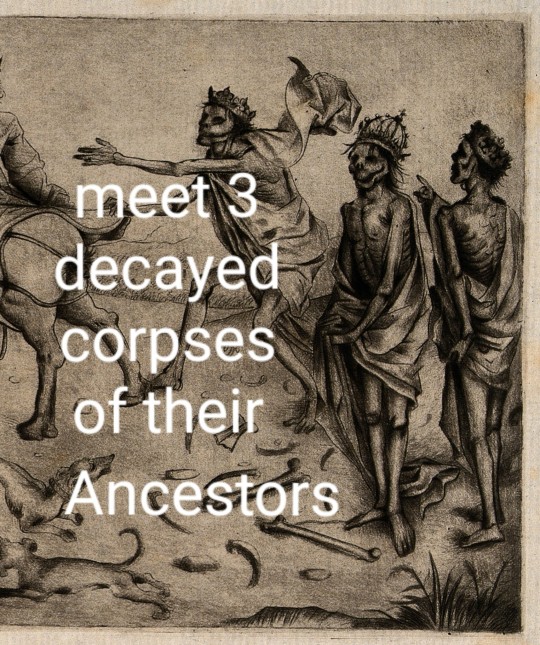


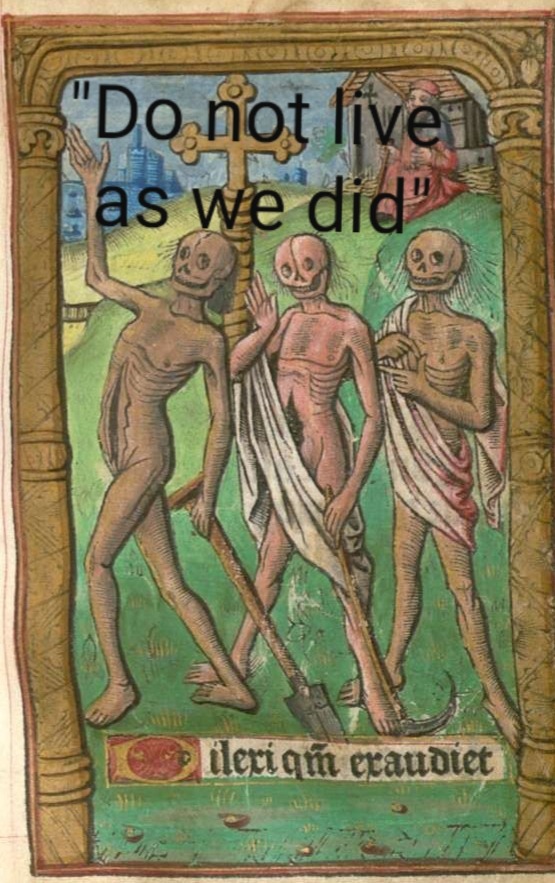

3 notes
·
View notes
Text
Gustav Klimt sought to show sensuality and pride in his art, and "Life and Death" shows his philosophy on rejecting Europe's history of minimizing pleasure and the moment. The Momento Mori is flipped on it's head to "remember you live".

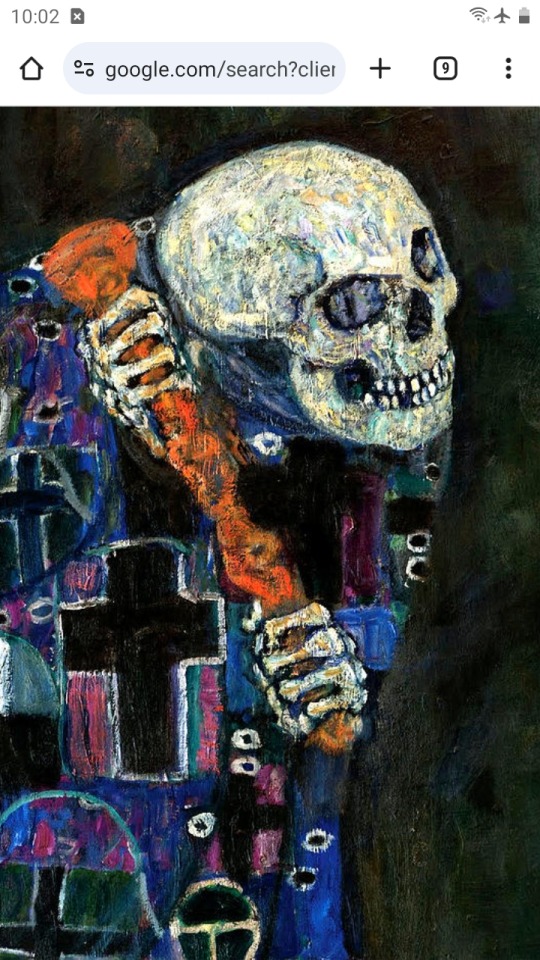
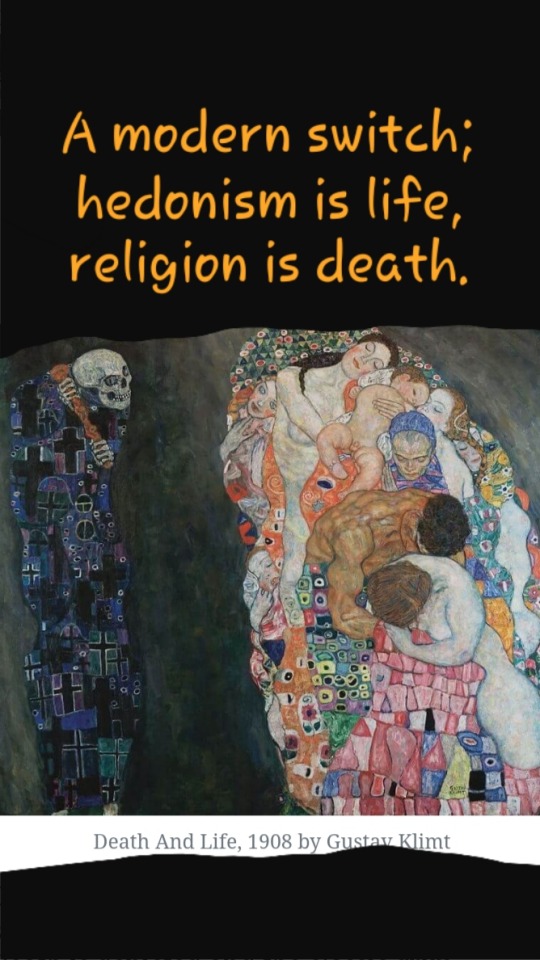
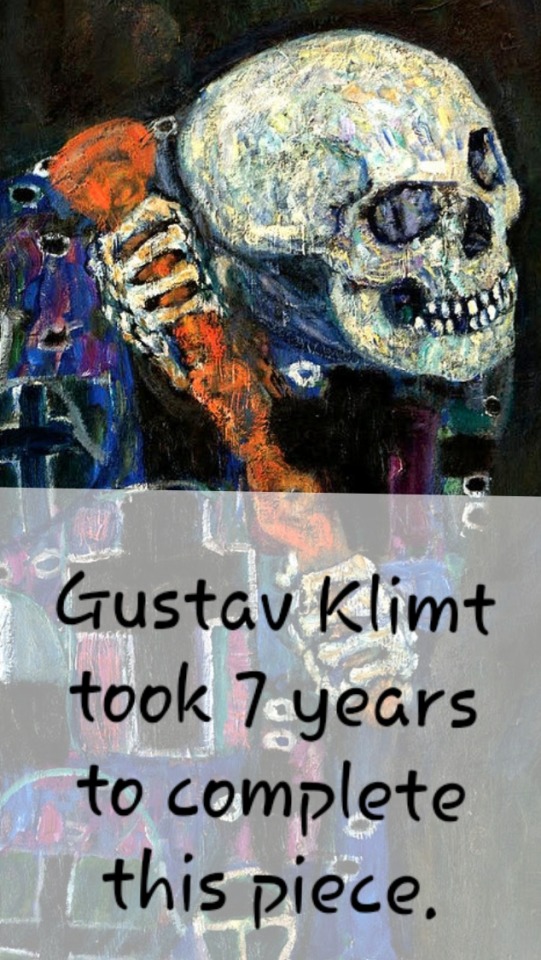


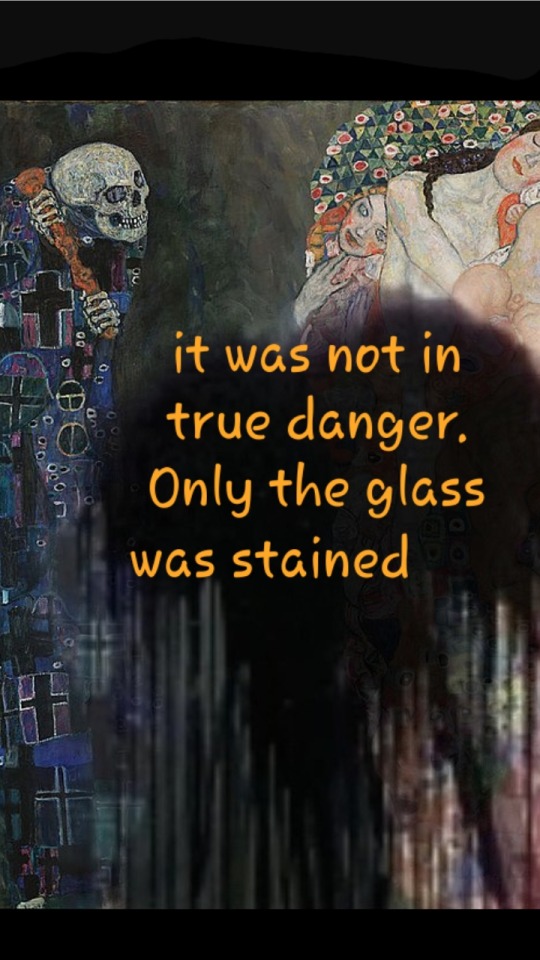
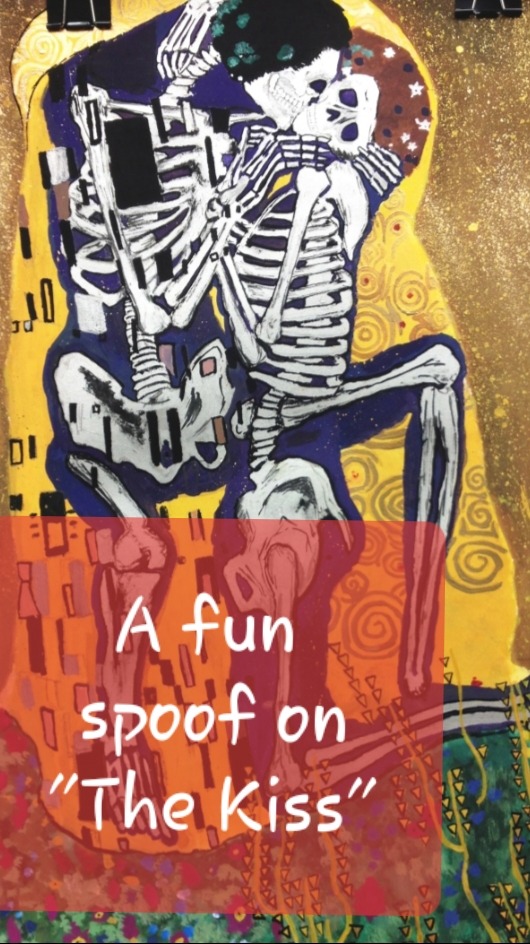

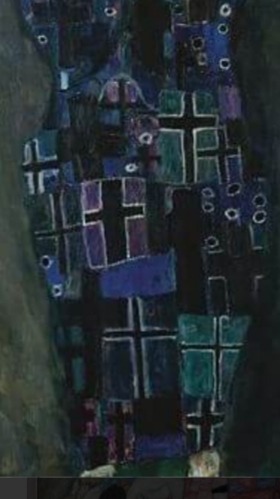
2 notes
·
View notes
Text
The Athlete of Crete

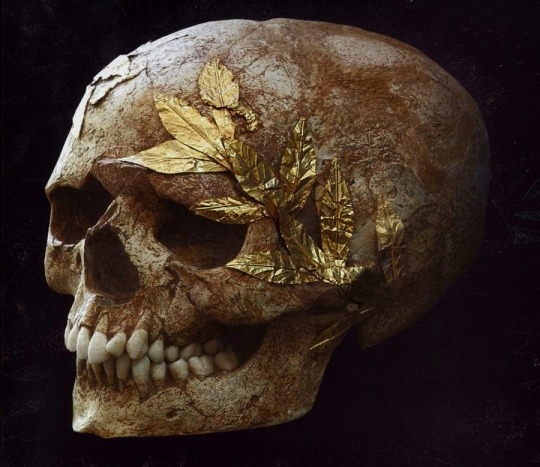
A renowned artifact from the village of Lato in Crete.
The skeleton was a young athlete who retained the golden wreath he was buried in. A golden wreath would be too fragile to wear in life, and are rarely depicted outside of emporers and the dead.
It is dated by the coin put in his mouth (as the fare for Charon to cross the river Styx) to the period of the Roman Emperor Tiberius (14-37AD) Also on the remains was a ring containing a picture of a female hanging a shield, or trophy on a column - indicating his prowess in his field.
The gold wreath indicates the deceased's success in athletic contests and also alludes to posthumous deification. The wreath has also a supernatural side in that it offers protection from demons. Different species of leaf represented special attributes. The ancient Olympic games were only one of four famous groups of competitions, and each awarded its own type of wreath. Artists and military heroes also had special wreaths.
A golden wreath from the classical tombs is anotorious as looted objects due to its value and light weight. Recently a golden wreath was discovered hidden in the home of a world traveler that still had burial dirt on it!
#bonefool#skull art#skeleton art#skulls#Golden wreath#ancient greece
4 notes
·
View notes
Text
Skeleton Amongst theRose's, 1913.
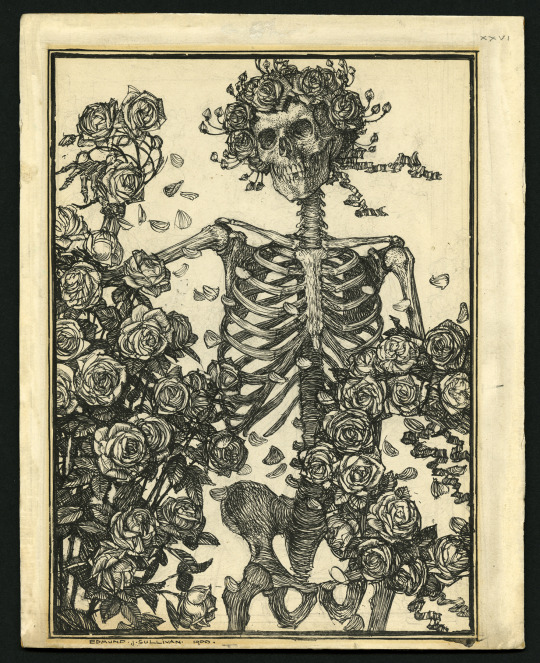
"One thing is certain, that Life flies; One thing is certain, and the rest is Lies"
E.J Sullivan's 1913 illustration of verse 24 from The Rubaiyat of Omar Khayyam.
The Persian Omar Khayyam lived 1048-1131, and was a famed astronomer and scientist. These verses are only historically connected him. The first reference to him as a writer is found 60 years after his death. They may present more of an agnostic Epicurean philosophy than any Muslim tradition, and might have only have been preserved for a millennium by being attached to such a well regarded figure.
In 1859 a pivitol English translation was published that would result in this books fame throughout late Vistorian and early 20th century intellectual circles. This illustration is from a 1913 edition.
In the psychedelic art poster movement of the 1960's, a copy of the image was made famous again. It was vividly colorized for the band The Grateful Dead, who continue to use it as an iconic picture 60 years later.
4 notes
·
View notes
Text
The skull of Yorick from Hamlet
A young prince is caught by the temporary nature of fame and memory. Shakespeare's best known sadboi holds the skull of the court Jester from his childhood, and waxes poetic on the predicament of being mortal. How would our thoughts about the dead be different if this part of our body did not exist for centuries after our deaths?

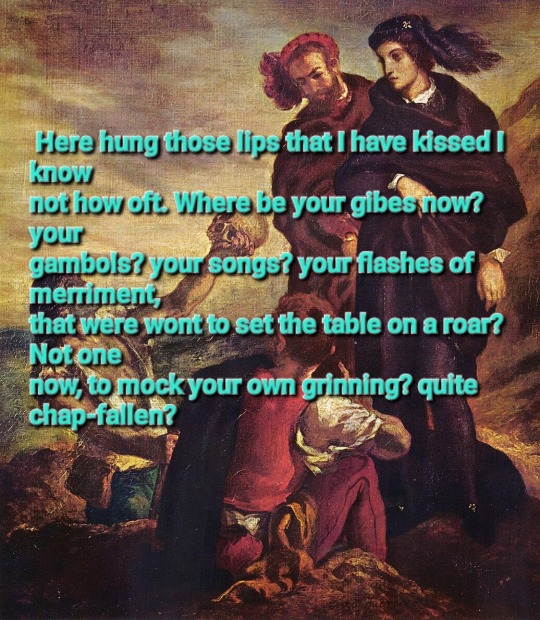
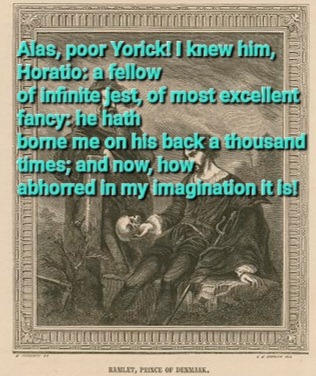


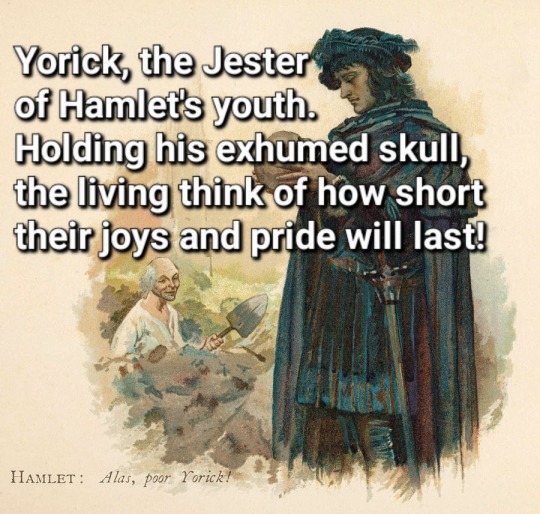
3 notes
·
View notes
Text
Claude Paladin's 1557 Heroic Devices
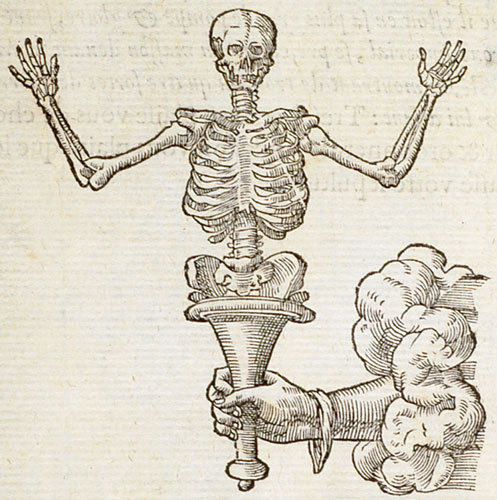
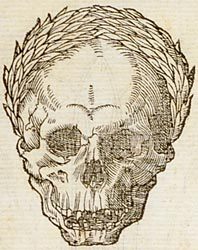
Books of devices became popular in Europe in the 1500's. They were similar to the art in books of alchemy because of the complex symbolic language the images represented.
Both these examples are from an early French (Lyon) book of these images. They each have titles, and short tales explaining the moral orsignificance. They are similar to the biblical stories carved and painted onto churches, though many have a more secular or classical bend. Many noble heralds come from this type of collection, so it is sort of a Sears catalogue of family crests.
The hand from a cloud holding a skeleton in a lantern is called "Look onto This" and its two stories are Momento Mori ( remember you too shall die) tales about the connection of joy and achievement to inevitable demise. It recounts the ancient tradition of asking a Roman emporer at his coronation what kind of stone they should begin building his tomb from. In my experience some folks really enjoy planning their own wills and burials. I know emperors are usually this type of person.
A cloud can represent the ephemeral and unstable reality of life. The hand expresses its message, and the skeleton is, of course, the end of life, or change.
The second image, the skull crowned in laurels like a Ceasar or Olympian, is titled " Victory is the End" and also has stories claiming to be from classical philosophy.
5 notes
·
View notes
